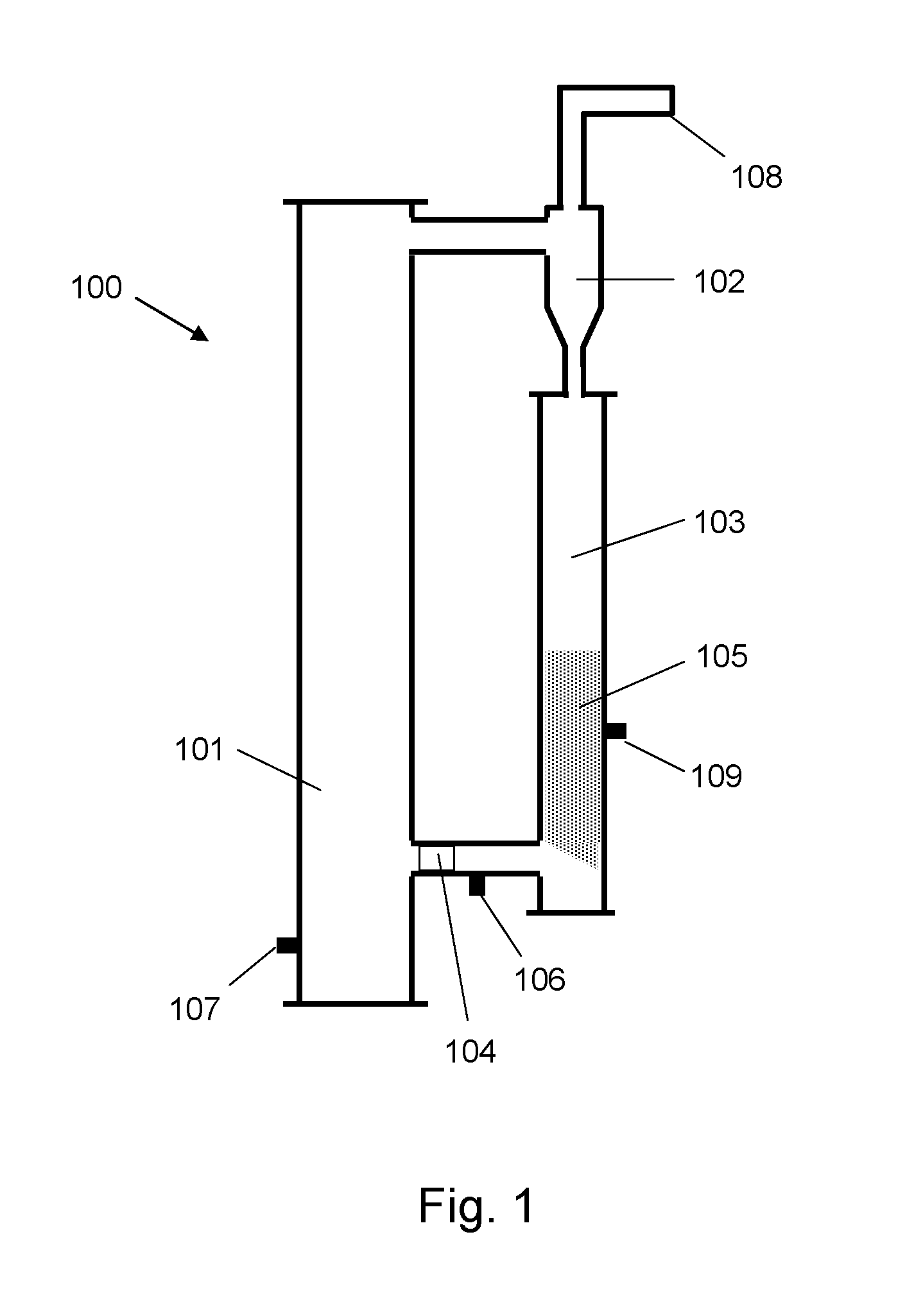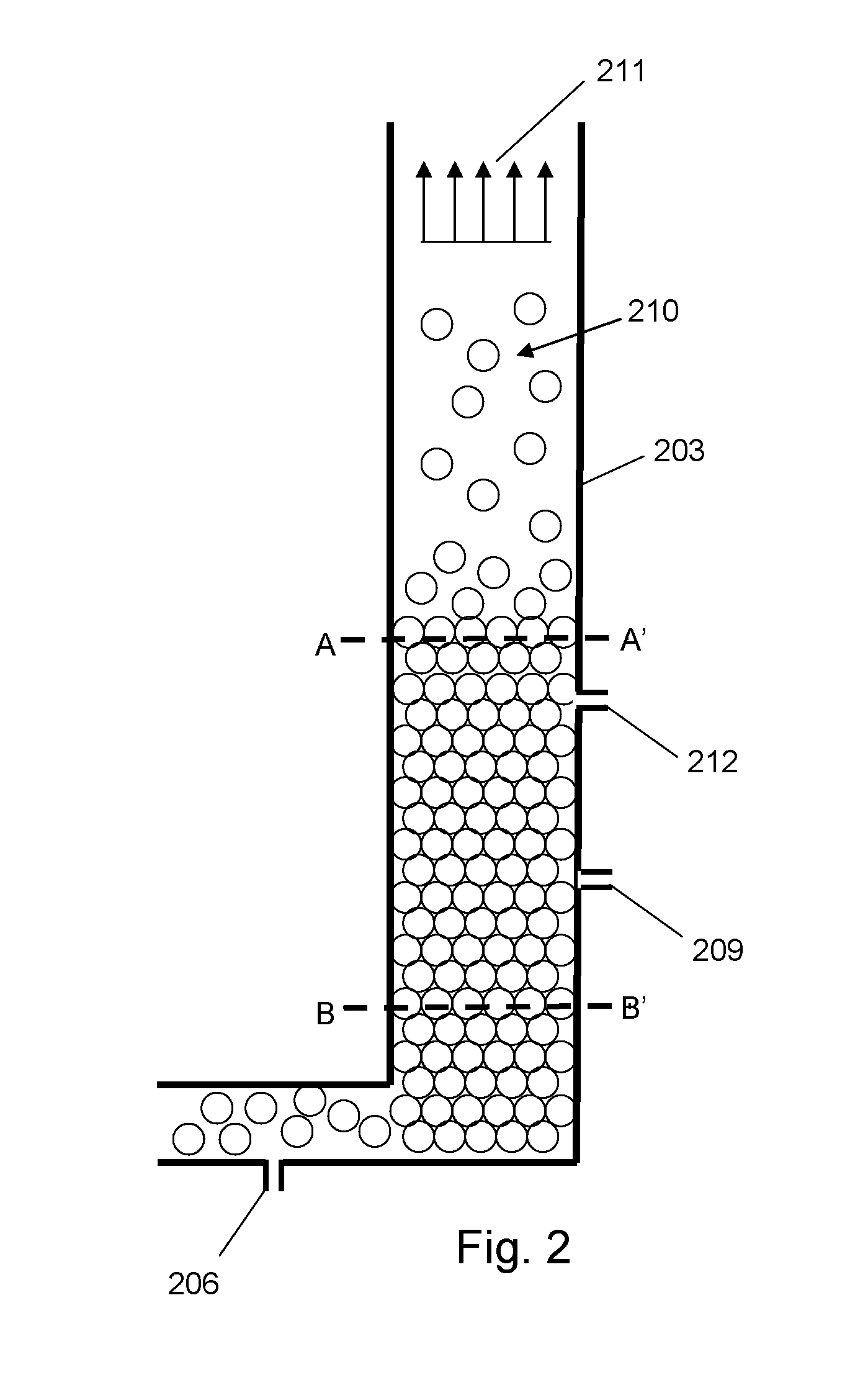Apparatus and method for determining solids circulation rate
- Summary
- Abstract
- Description
- Claims
- Application Information
AI Technical Summary
Benefits of technology
Problems solved by technology
Method used
Image
Examples
Embodiment Construction
[0025]The following description is provided to enable any person skilled in the art to use the invention and sets forth the best mode contemplated by the inventor for carrying out the invention. Various modifications, however, will remain readily apparent to those skilled in the art, since the principles of the present invention are defined herein specifically to provide a technique for measuring solids flowrate which mitigates the aggressive impact of the high temperatures and gas compositions often encountered, is non-intrusive to the flow itself so that systematic errors from changes in the flow itself are minimized, is capable of operation in large-scale units with minimized calibration requirements, and is able to cover a broad range of circulation rates with consistent accuracy through utilization of Ergun correlations.
[0026]As used herein, the term “Ergun correlation” means a formulation relating pressure drop, superficial gas or liquid velocity, void fraction, and parameters...
PUM
 Login to View More
Login to View More Abstract
Description
Claims
Application Information
 Login to View More
Login to View More - R&D
- Intellectual Property
- Life Sciences
- Materials
- Tech Scout
- Unparalleled Data Quality
- Higher Quality Content
- 60% Fewer Hallucinations
Browse by: Latest US Patents, China's latest patents, Technical Efficacy Thesaurus, Application Domain, Technology Topic, Popular Technical Reports.
© 2025 PatSnap. All rights reserved.Legal|Privacy policy|Modern Slavery Act Transparency Statement|Sitemap|About US| Contact US: help@patsnap.com



